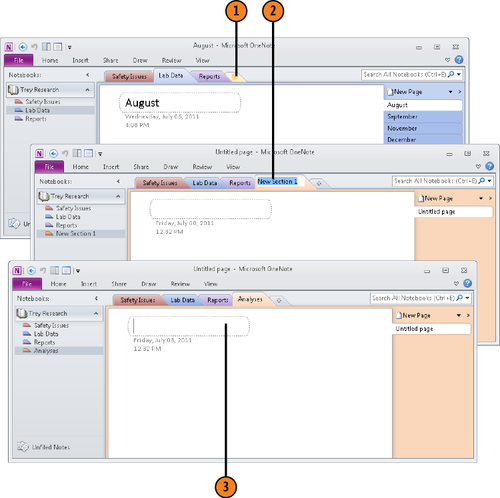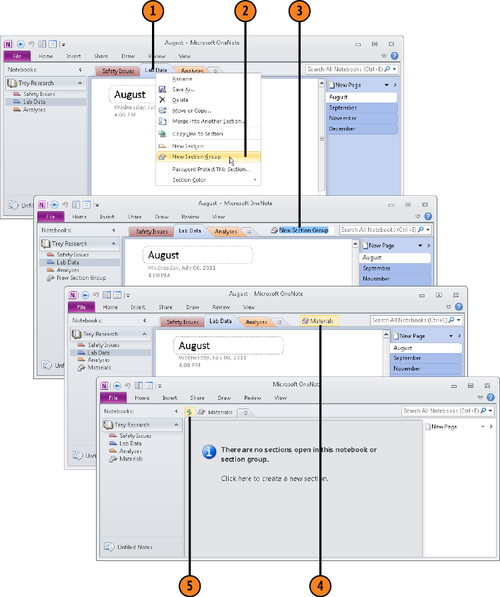1. Creating Sections
Within a notebook, create a section for each topic you want to address. Use these techniques to create a section:
After you create a section, enter a name for it on the section tab. When you create a new section, OneNote creates the first page in the section automatically.
1.1. Create a Section
Click the Create a New Section button (or press Ctrl+T).
Enter a name for the section and press Enter.

Tip:
To rename a section, double-click its name in the section tab and type a new name.
Tip:
To change the position
of sections on the Navigation bar or section tabs, drag a section. On
the Navigation bar, drag a section name up or down; on the section tabs,
drag a section tab left or right.
Note:
Try This!
Each section you create is
stored in a Microsoft OneNote Section (.one) file in the notebook folder
where data about your notebook is kept. To see the path to this file,
move the pointer over a section tab. A ScreenTip shows the section name
and path to its .one file.
2. Creating Section Groups
Think of a section group as a
subfolder for storing sections. In the Navigation bar and section tabs,
section groups always appear after sections. Place sections in a section
group to organize sections better.
To create a section group, right-click a section tab or section in the Navigation bar and choose New Section Group. Then enter a name for the group.
After you create a section group, you can create sections for it or move sections into it.
On the Navigation bar and section tabs, section group names are marked with the section group icon, some stacked folders.
To open a section group,
click its name on the Navigation bar or section tabs. After you open a
section group, you see only section tabs belonging to the group in the
section tabs area. Use these techniques to see all the sections in the
notebook rather than the sections in a group:
2.1. Create a Section Group
Choose New Section Group on the shortcut menu.
Enter a name and press Enter.
Select the section group tab.
Click Navigate to Parent Section Group.
